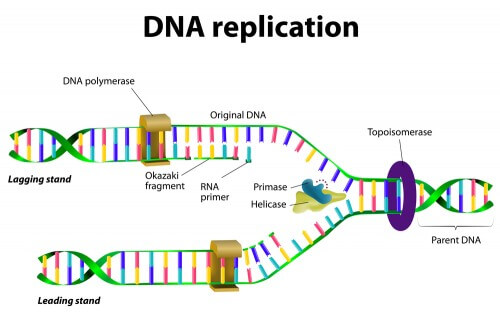In an article published in the journal Molecular Cell, Dr. Sebastian Kadner's laboratory revealed the formation process of the circular RNA molecules.

The genetic information of each of us is encoded in DNA molecules. This information is transcribed/transcribed into RNA molecules which are usually translated into proteins, which are responsible for most of the various cell functions. RNA can appear in a variety of forms in the cell. A few years ago, a new form of RNA molecules was discovered. This ring, unlike all other cellular RNA molecules, is circular. Despite the fact that circular RNA is very common in cells, the mechanism of the formation of these circular molecules is not known. Also, very few studies have been published about the cellular role and the possible involvement of circular RNA molecules in various diseases.
In an article published in the journal Molecular Cell, Dr. Sebastian Kadner's laboratory revealed the formation process of the circular RNA molecules. In their research, they found that the formation process of these circular RNA molecules competes with that of the linear molecules, which are derived from the same DNA source. Hence, the creation of circular RNA molecules has broad consequences both on the entire RNA storage pool and on the gene expression array in the cell. In this study it was also found that these circular molecules are produced at a high level in the brain, and many times originate from genes that are very important for brain function, a fact that suggests the involvement of these molecules in the normal activity of the brain.
Further to this self-control, their research indicates another level of control, in the opposite direction, according to which this circular RNA has a role in controlling the activity of the protein itself. It is important to note that abnormal activity of the muscleblind protein causes the formation of serious degenerative diseases such as myotonic dystrophy, which indicates the possible involvement of circular RNA molecules in this type of disease. Therefore, this work is an important contribution to the understanding of the molecular mechanisms underlying degenerative diseases, such as muscular dystrophy, and is at the forefront of research dealing with molecular biology.
This research was done in collaboration between Dr. Kadner's laboratory and that of Professor Nikolaus Rybsky from the Max Delbrück Institute in Berlin, Germany. The researchers involved in this study are: Dr. Reut Ashuel Plus, Nagarjun Radi-Pamdorty, Dr. Esnat Bartok, Mor Hanan and Noah Abenthal (from the Kadner group), Marcus Mayer, Andranik Ivanov and Sebastian Mamcek (from the Rybsky group).
